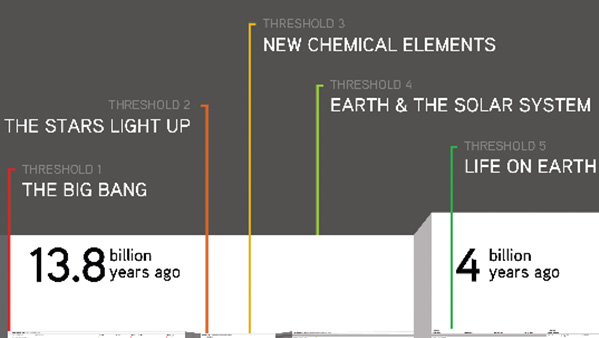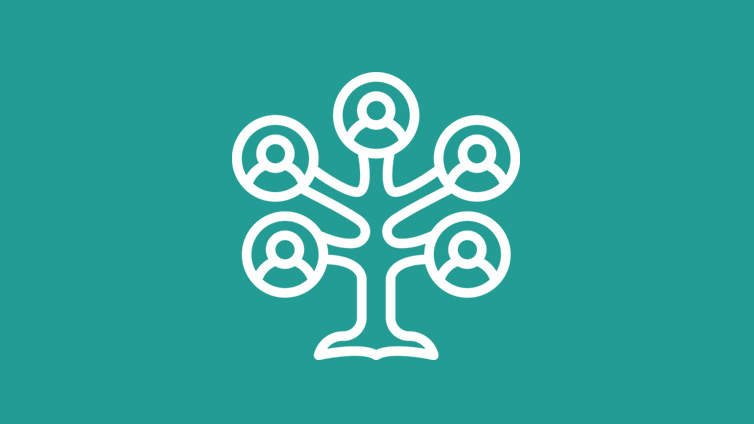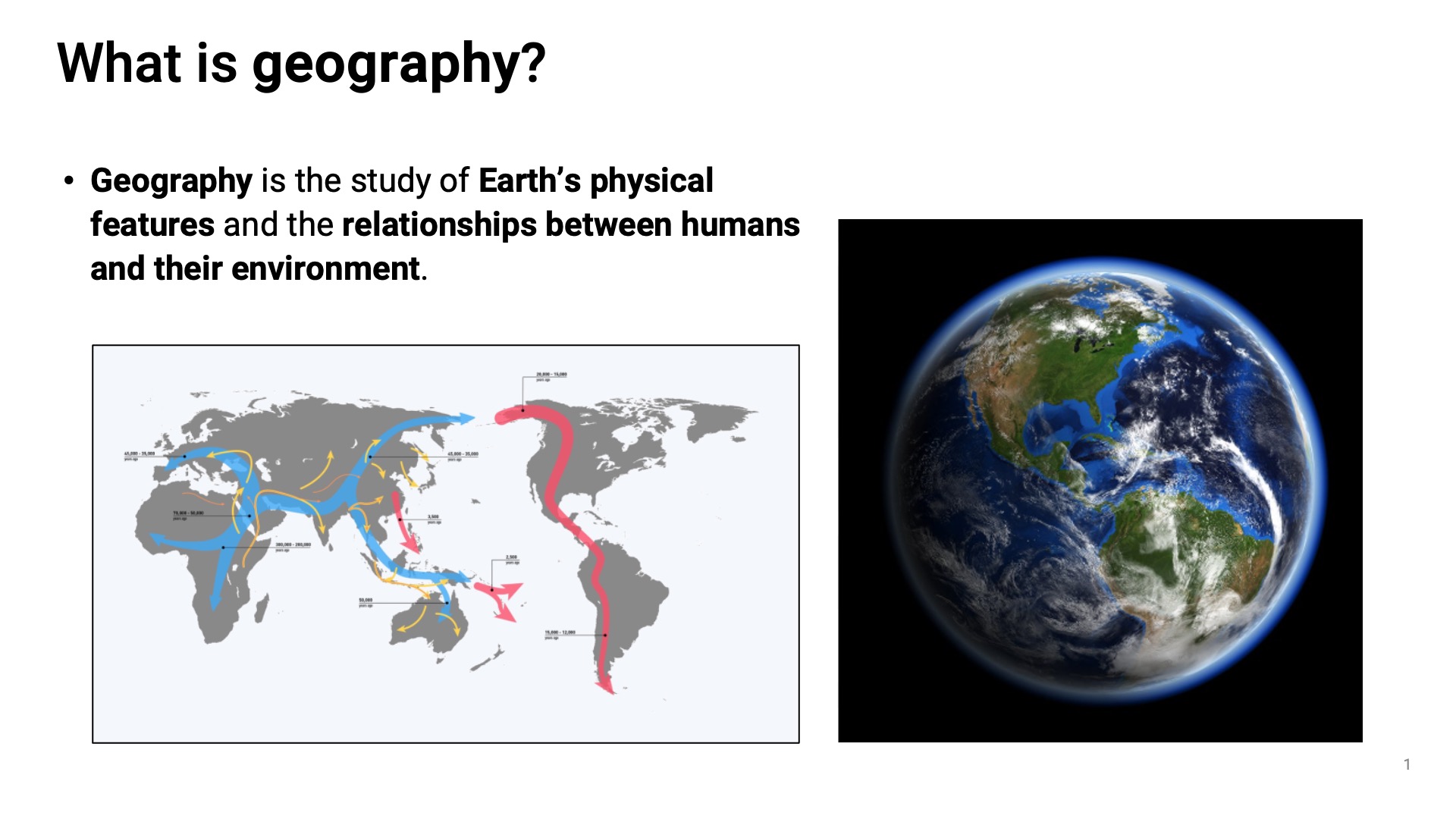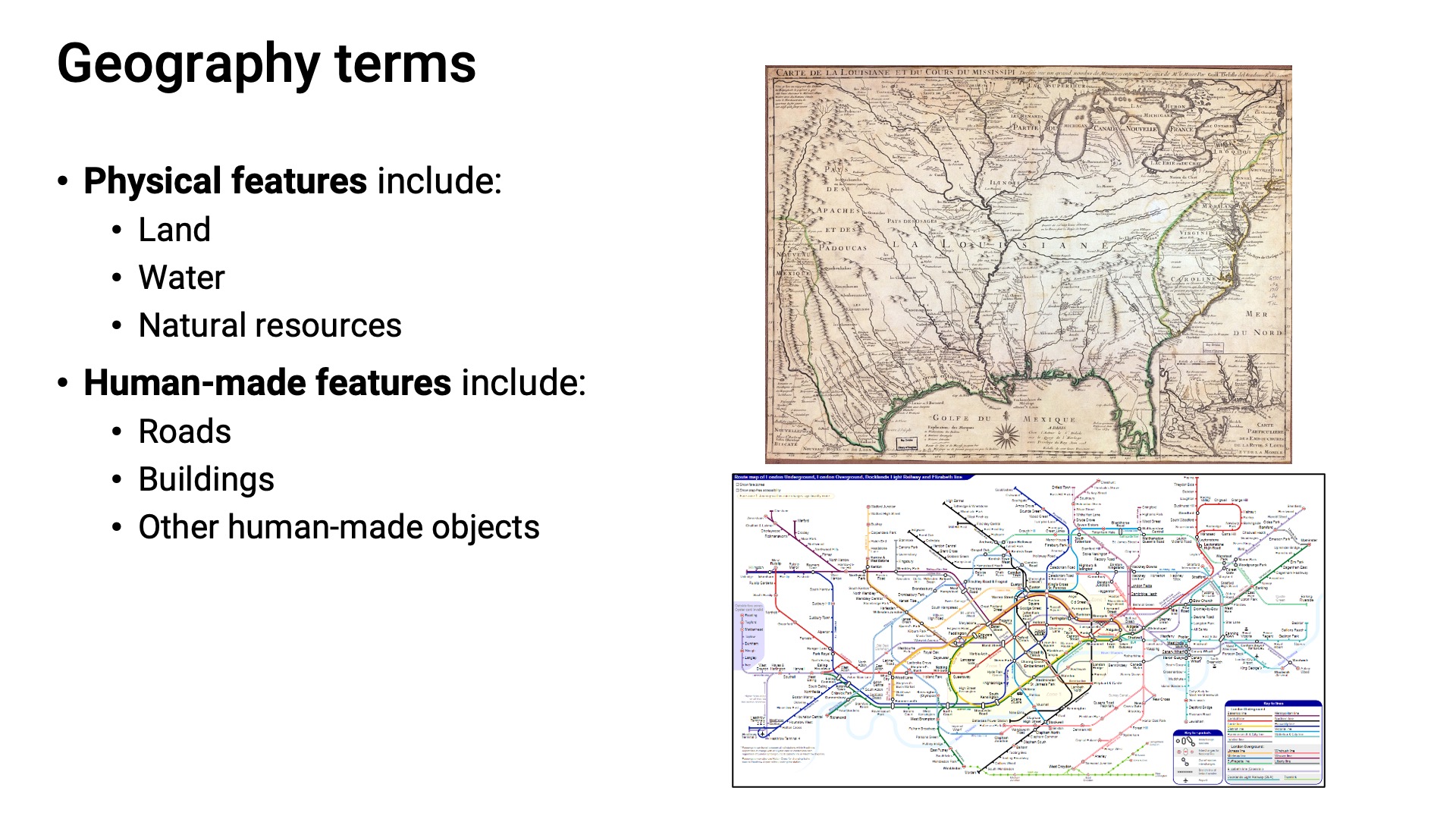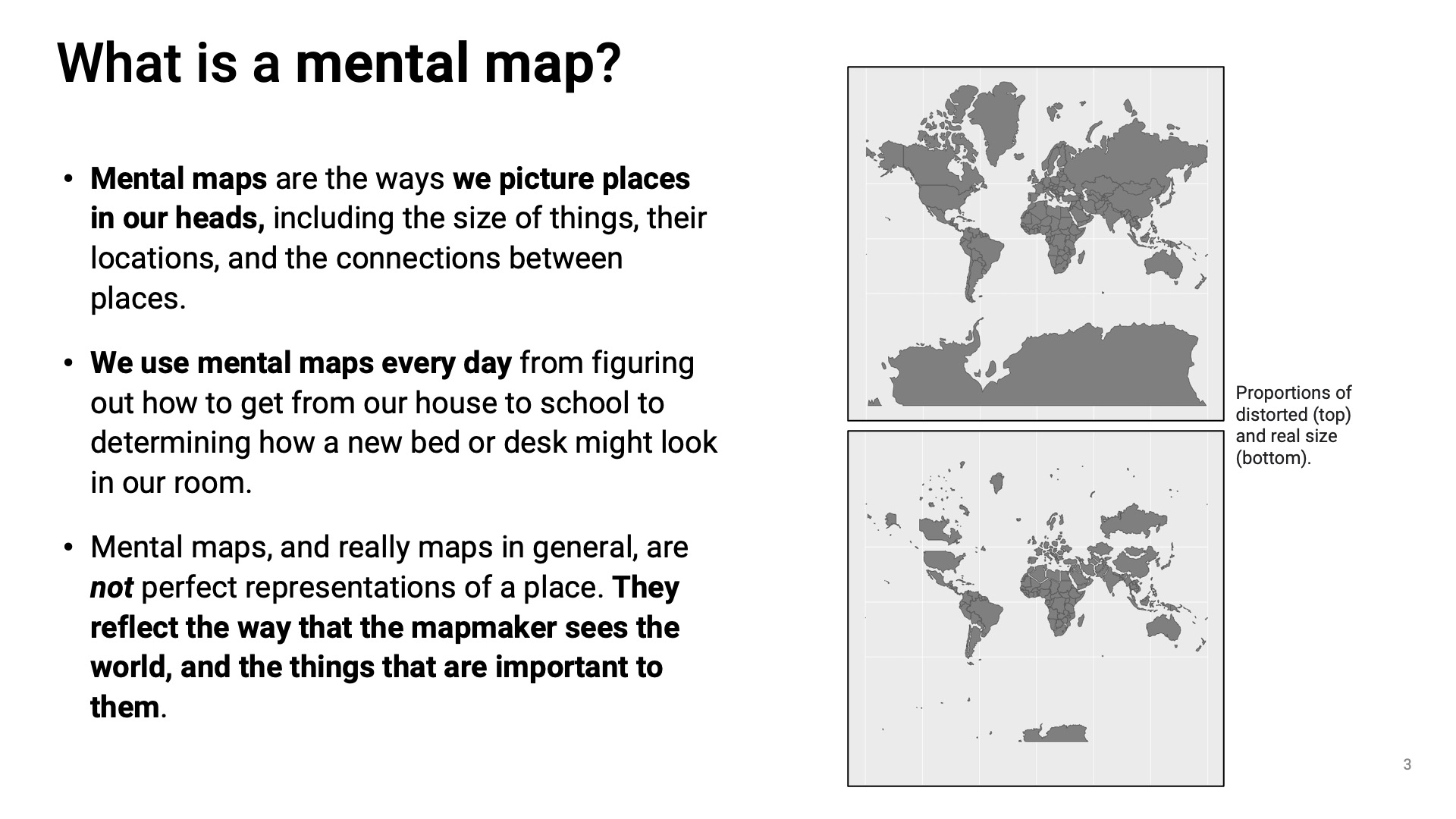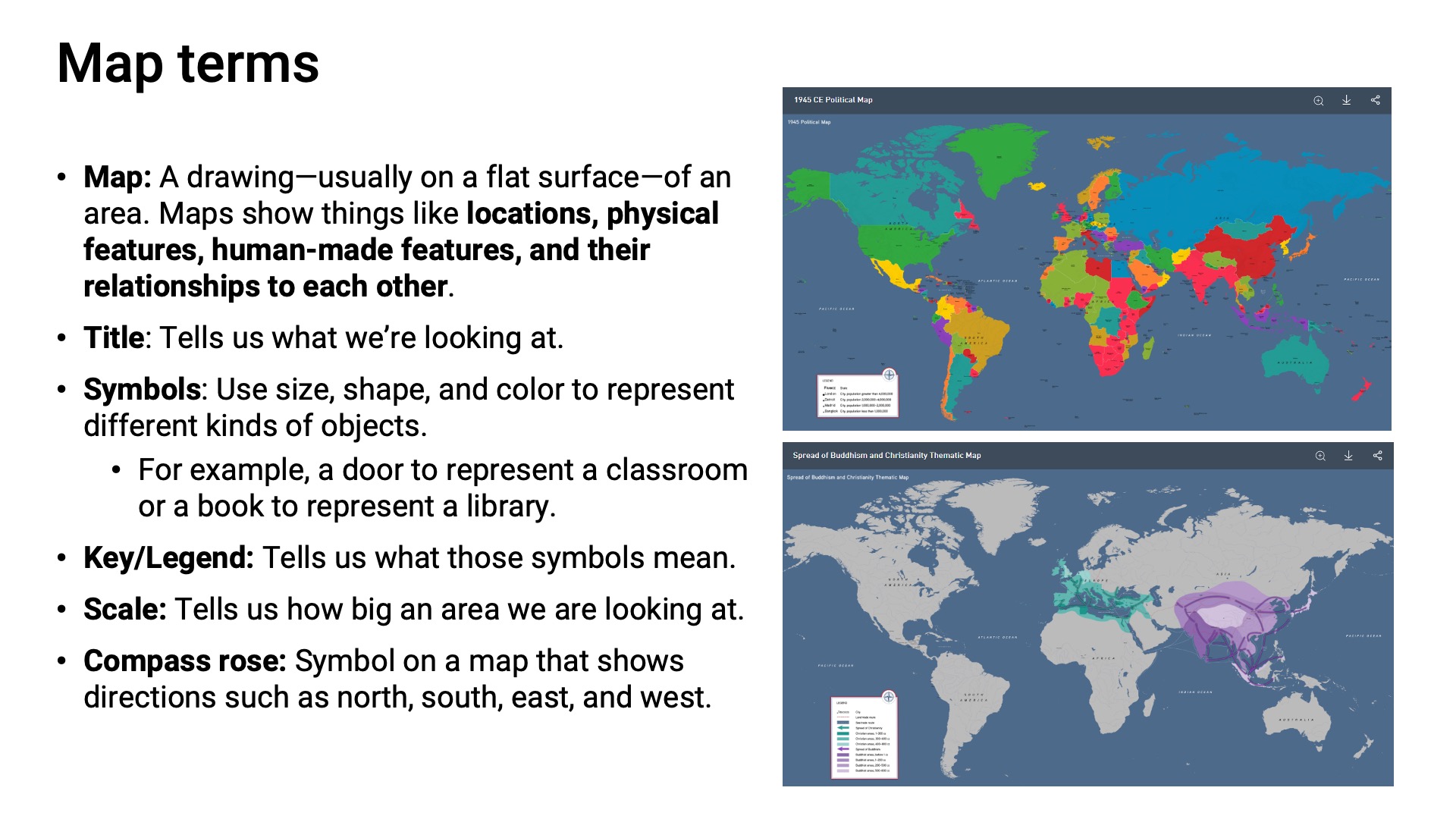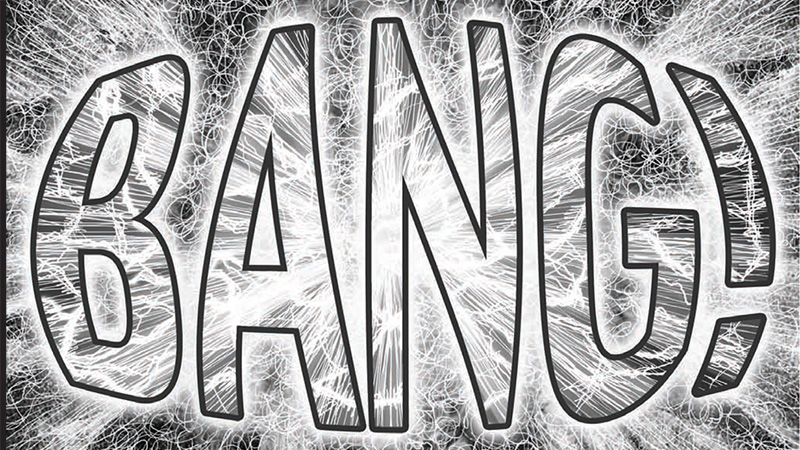Scale
Teacher Resources
Driving Question: How does looking at things from different scales of time and space help us understand our past?
Big History explores different scales of time and space to understand human history from new angles. How does zooming in and zooming out help us see different perspectives of the Universe’s history?
Learning Objectives:
- Define scale and scale switching.
- Explain how scale switching makes Big History different from other approaches to history.
- Create mental maps to organize information about places, environments, and people at different scales.
Vocab Terms:
- geography
- history
- scale
- scale switching
Opener: Scale
To teach this lesson step, refer to page 2 of the Lesson 1.2 Teaching Guide.
In this post in the OER Project Teacher Community, teachers share a variety of ideas for teaching scale.
In Big History, you’ll often be asked to look at history from close up and far away. Scale switching is an important and necessary part of studying our Universe, so let’s start practicing this skill!
Zooming In and Out
To teach this lesson step, refer to page 3 of the Lesson 1.2 Teaching Guide.
Take a look at the BHP Reading Guide for some approaches to teaching reading.
How does switching scales of both time and space help you understand Big History? For one thing, it will help you see how one individual—you—fits into the story of something as vast as the Universe.
-
Guiding Questions
-
Before you read
Preview the questions below, and then skim the article. Be sure to look at the section headings and any images.
While you read
Look for answers to these questions:
- What does the word scale mean?
- What are two examples of the different scales of time and space used in Big History?
- What is scale switching?
- How is scale switching used in Big History?
After you read
Respond to this question: What are some pros and cons of looking at things from different scales of time and space?
Big History and You
To teach this lesson step, refer to page 4 of the Lesson 1.2 Teaching Guide.
Big History is a way of thinking that you can use to understand many different things. Next, we’ll tell the story of your life—Big History style.
Introduction to Geography
To teach this lesson step, refer to page 4 of the Lesson 1.2 Teaching Guide.
Want to see more maps to use throughout the course? Here is the collection of OER Project maps.
Time to bring things down to earth! You’ll explore geography and scale using maps, both regular and “mental.”
Geography 101
Cosmic Calendar
To teach this lesson step, refer to page 4 of the Lesson 1.2 Teaching Guide.
For a historian’s perspective on scale switching, check out this blog post.
The average human lives to be 70 or 80—so how can you get your mind around 13.8 billion years? These simple scale activities can help.
Closer: Scale
To teach this lesson step, refer to page 5 of the Lesson 1.2 Teaching Guide.
Check out more Big History Project timelines here.
The Cosmic Calendar was a great start. Now let’s use a timeline and see what we can learn from a different perspective.
Universe Comic
Long story short, this comic tells whole history of how the Universe began. You’ll learn more stuff in a shorter time than you ever have before!
-
Guiding Questions
-
Before you read
Preview the questions below, and then skim the article. Be sure to look at the section headings and any images.
While you read
Look for answers to these questions:
- How did the Universe begin?
- What four forces emerged after the Universe began to cool?
- What were the earliest atoms to form?
- How did stars form?
- What happens when stars die?
After you read
Respond to this question: How does this comic incorporate scale switching to help you understand the early Universe?


